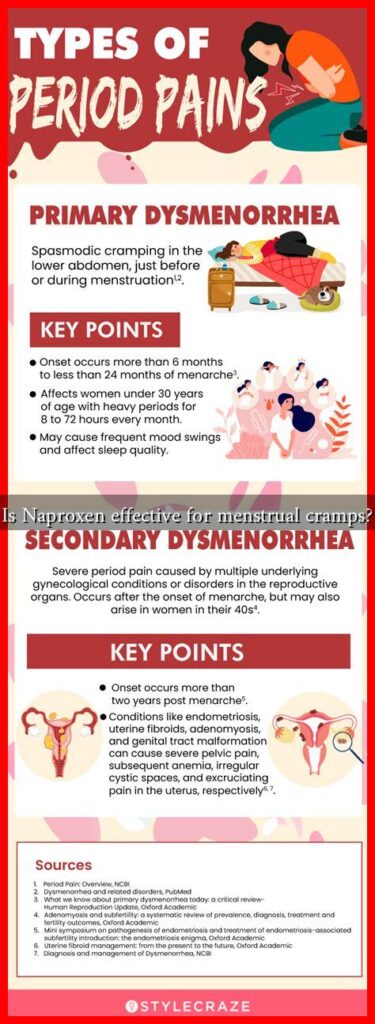-
Table of Contents
Is Naproxen Effective for Menstrual Cramps?
Menstrual cramps, medically known as dysmenorrhea, are a common issue faced by many women during their menstrual cycle. These cramps can range from mild discomfort to severe pain, significantly impacting daily activities. Among various treatment options, nonsteroidal anti-inflammatory drugs (NSAIDs) like naproxen have gained popularity. This article explores the effectiveness of naproxen for alleviating menstrual cramps, supported by research and expert opinions.
Understanding Menstrual Cramps
Menstrual cramps occur due to the contraction of the uterus as it sheds its lining. The pain is often caused by the release of prostaglandins, which are hormone-like substances that trigger inflammation and pain. Symptoms can include:
- Throbbing or cramping pain in the lower abdomen
- Pain that radiates to the lower back and thighs
- Nausea and vomiting
- Headaches and dizziness
For many women, these symptoms can be debilitating, leading to missed work or school days. Therefore, effective pain management is crucial.
What is Naproxen?
Naproxen is a widely used NSAID that works by inhibiting the production of prostaglandins, thereby reducing inflammation and pain. It is available over-the-counter and by prescription, making it accessible for many individuals seeking relief from menstrual cramps.
Research on Naproxen and Menstrual Cramps
Numerous studies have examined the efficacy of naproxen in treating dysmenorrhea. A systematic review published in the journal Pain Medicine found that NSAIDs, including naproxen, significantly reduced menstrual pain compared to placebo treatments. The review highlighted the following points:
- Naproxen was found to be more effective than acetaminophen for menstrual pain relief.
- Women who took naproxen reported a 50% reduction in pain intensity.
- Side effects were generally mild, including gastrointestinal discomfort and drowsiness.
Another study published in the American Journal of Obstetrics and Gynecology indicated that naproxen was effective when taken at the onset of cramps, providing relief within 30 minutes to an hour. This rapid onset makes it a preferred choice for many women.
Dosage and Administration
The typical dosage of naproxen for menstrual cramps is 220 mg to 440 mg, taken every 8 to 12 hours as needed. It is essential to follow the recommended dosage and consult a healthcare provider if symptoms persist or worsen. Overuse of naproxen can lead to side effects such as:
- Gastrointestinal bleeding
- Kidney damage
- Increased risk of heart attack or stroke
Alternatives to Naproxen
While naproxen is effective for many, some women may seek alternative treatments for menstrual cramps. Options include:
- Other NSAIDs like ibuprofen
- Hormonal contraceptives to regulate or eliminate periods
- Heat therapy, such as heating pads or hot baths
- Dietary changes and supplements, including omega-3 fatty acids
Conclusion
Naproxen has proven to be an effective option for managing menstrual cramps, with research supporting its efficacy and safety when used as directed. For many women, it provides significant relief from the debilitating pain associated with dysmenorrhea. However, it is essential to consider individual health needs and consult with a healthcare provider to determine the best treatment plan. By understanding the options available, women can take proactive steps to manage their menstrual pain effectively.




